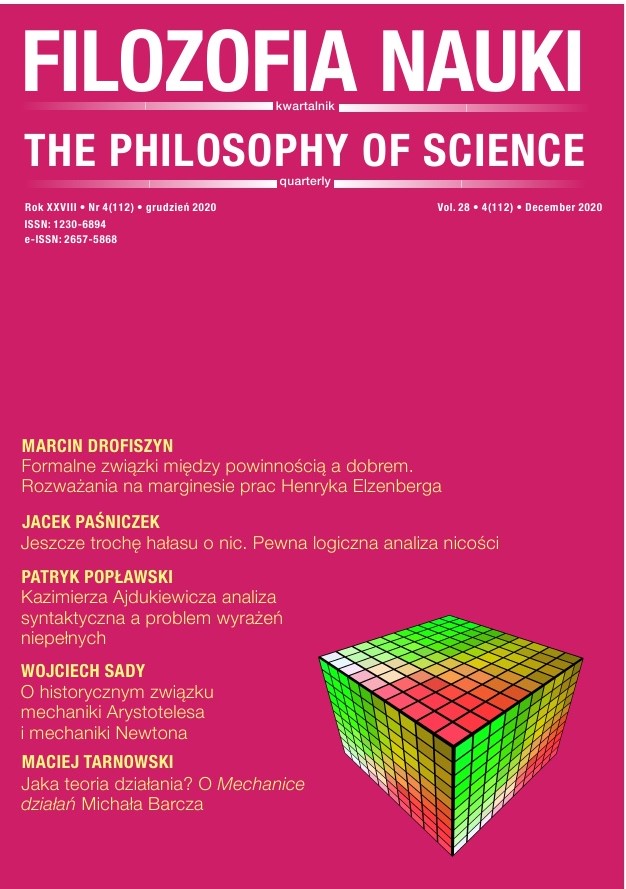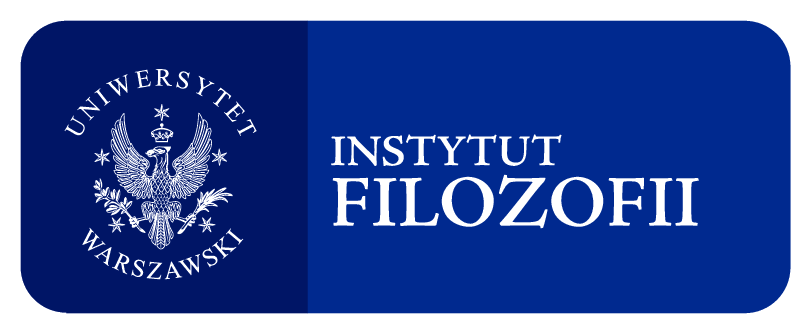O historycznym związku mechaniki Arystotelesa i mechaniki Newtona
DOI:
https://doi.org/10.14394/filnau.2020.0022Słowa kluczowe:
Aristotelian physics, impetus theory, classical mechanics, scientific revolutionAbstrakt
Recently, it has been claimed that Aristotle’s mechanics is a special case of Newton’s mechanics, adequate for speeds tending to zero (Grygiel 2020). I show in the article that this claim does not stand up to closer scrutiny. But there is a peculiar historical relationship between the two theories. Attempts to reconcile the tenets of Aristotelian mechanics with the results of everyday observations by Greek, Arabic, and Latin commentators led to the addition of the theory of impetus to this mechanics. The theory of impetus, in conjunction with the basic principles of Aristotle’s physics, led to conclusions that shattered the system’s coherence. In the seventeenth century, some of these conclusions were elevated to the rank of independent principles, and after being separated from their sources, they gave rise to the research program of Newtonian mechanics.
Bibliografia
Arystoteles (1990), O niebie, tłum. P. Siwek [w:] Dzieła wszystkie, t. 2, Warszawa: Państwowe Wydawnictwo Naukowe, 232-338.
Arystoteles (1990), O powstawaniu i niszczeniu, tłum. L. Regner [w:] Dzieła wszystkie, t. 2, Warszawa: Państwowe Wydawnictwo Naukowe, 353-424.
Bodnar I. (2018), Aristotle’s Natural Philosophy [w:] The Stanford Encyclopedia of Philosophy (Spring 2018 Edition), E. N. Zalta (ed.), https://stanford.io/3fYEOXT.
Buridan J. (2000), Subtilissimae quaestiones super octo Physicorum libros Aristotelis, fragm. w wyd. pol. Dzięki czemu porusza się przedmiot rzucony, tłum. M. Gensler, D. Gwis, E. Jung-Palczewska [w:] Wszystko to ze zdziwienia. Antologia tekstów filozoficznych z XIV w., E. Jung-Palczewska (red.), Warszawa: Wydawnictwo Naukowe PWN, 267-280.
Clagett M. (1955), Science of Mechanics in the Middle Ages, Madison: University of Wisconsin Press.
Crombie A. C. (1960), Nauka średniowieczna i początki nauki nowożytnej, tłum. S. Łypacewicz, t. 1 i 2, Warszawa: Instytut Wydawniczy PAX.
Duhem P. (1913-1959), Le système du monde, histoire des doctrines cosmologiques de Platon à Copernic, 10 tomów, Paris: Hermann.
Fleck L. (1936), Zagadnienie teorii poznawania, „Przegląd Filozoficzny” 39, 3-37.
Grant E. (1996), Średniowieczne podstawy nauki nowożytnej, tłum. T. Szafrański, Warszawa: Prószyński i S-ka.
Grygiel W. (2020), Mechanika arystotelesowska a współczesna fizyka. Na tropach ciągłości wewnętrznej logiki rozwoju nauki, „Filozofia Nauki” 28(1) [109], 5-24. https://doi.org/10.14394/filnau.2020.0001
Heller M. (1993), Fizyka ruchu i przestrzeni, Warszawa: Wydawnictwo Naukowe PWN.
Jones A., Taub L. (eds.) (2018), Cambridge History of Science, vol. 1, Ancient Science, Cambridge: Cambridge University Press. https://doi.org/10.1017/9780511980145
Kuhn T. S. (2003), Czym są rewolucje naukowe? [w:] tenże, Droga po „Strukturze”, tłum. S. Amsterdamski, Warszawa: Sic!, 17-33.
Lakatos I. (1995), Falsyfikacja a metodologia naukowych programów badawczych [w:] Pisma z filozofii nauk empirycznych, tłum. W. Sady, Warszawa: Wydawnictwo Naukowe PWN, 3-169.
Lindberg D. C., Shank M. H. (2013), Cambridge History of Science, vol. 2, Medieval Science, Cambridge: Cambridge University Press. https://doi.org/10.1017/CHO9780511974007
Reale G. (1992), Historia filozofii starożytnej, t. II, Platon i Arystoteles, tłum. E. I. Zieliński, Lublin: KUL 2001.
Rovelli C. (2015), Aristotle’s Physics: A Physicist’s Look, ,,Journal of the American Philosophical Association” 1, 23-40. https://doi.org/10.1017/apa.2014.11
Sady W. (2020), Struktura rewolucji relatywistycznej i kwantowej w fizyce, Kraków: Universitas.
Wróblewski A. K. (2006), Historia fizyki, Warszawa: Wydawnictwo Naukowe PWN.



















 Filozofia Nauki | ISSN 1230-6894 | e-ISSN 2657-5868
Filozofia Nauki | ISSN 1230-6894 | e-ISSN 2657-5868